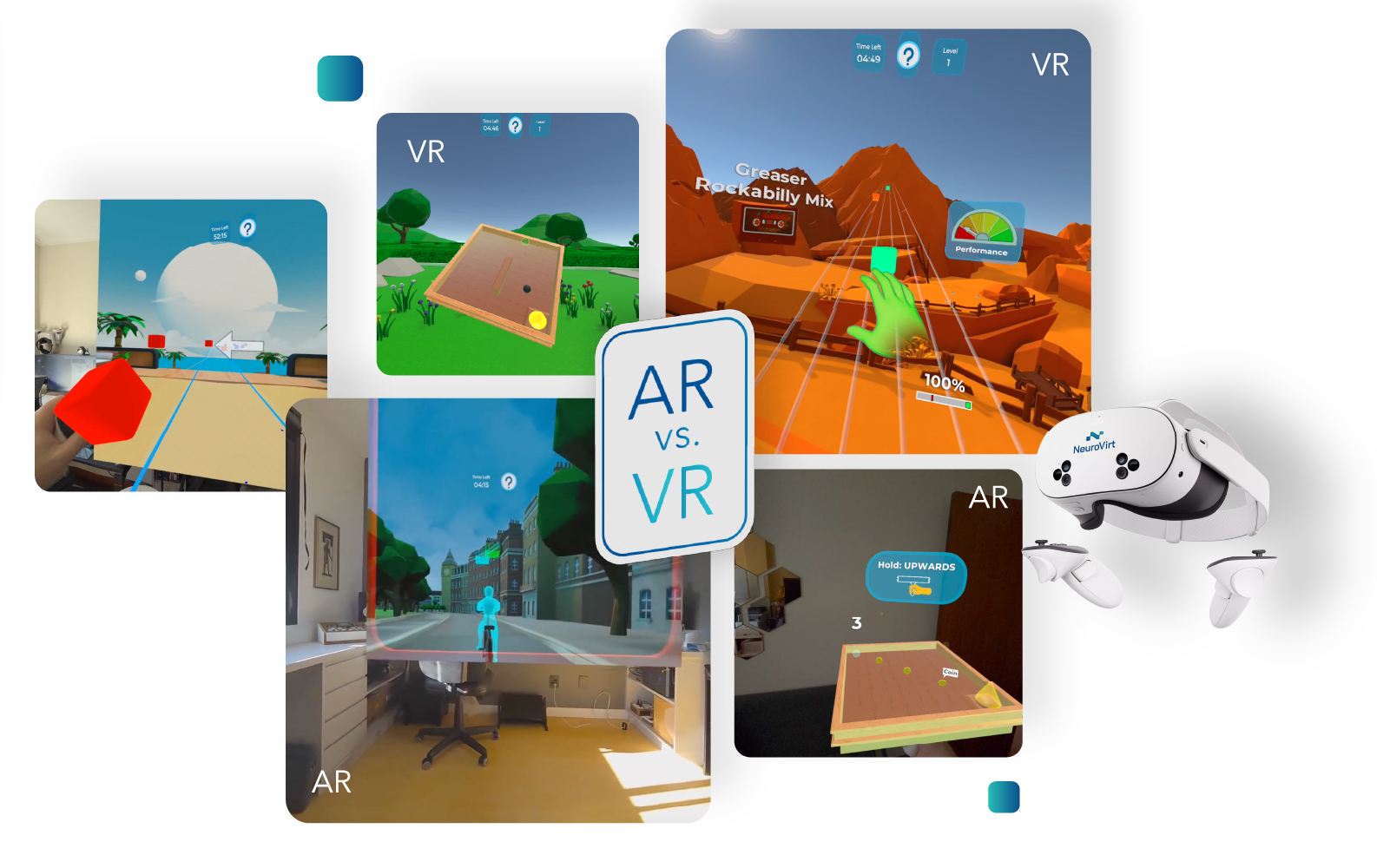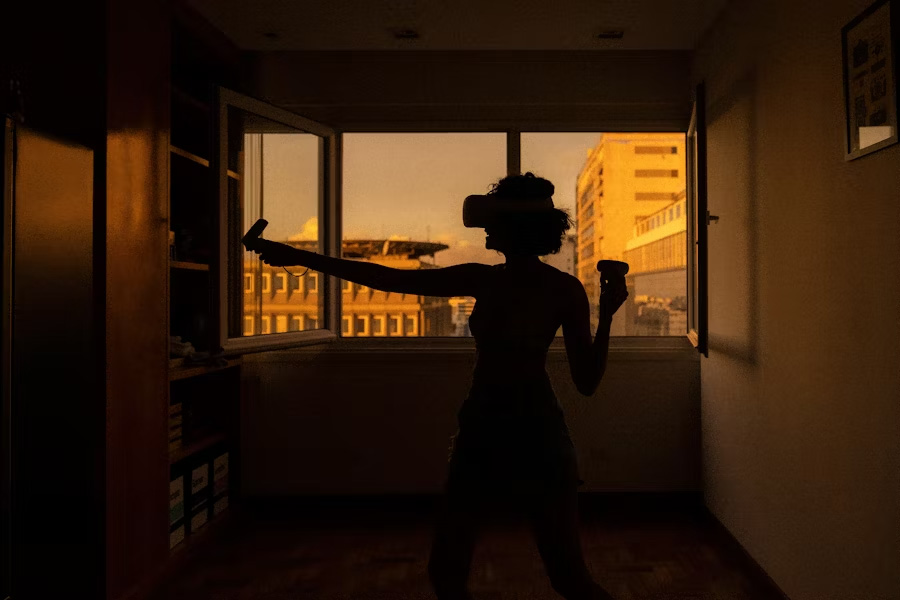At NeuroVirt, we design immersive technology that adapts to clinical needs - because no two patients, and no two rehab scenarios, are exactly alike.
When we talk about VR and AR in the context of NeuroVirt’s technology, we’re referring specifically to head-mounted display (HMD) technologies – not external screen-based tools.
Immersive VR (iVR) refers to being fully immersed in a virtual environment, where the real world is visually replaced by a digital one. This can help patients tune out distractions and focus more deeply on rehabilitation tasks. It creates a highly controlled environment ideal for high-repetition, task-specific movements that drive neuroplasticity and motor recovery – particularly effective for upper-limb therapy. iVR is also highly engaging and supports embodiment – the sense of ownership over virtual limbs – which can play a vital role in functional recovery.
Augmented Reality (AR), by contrast, overlays digital elements onto the real-world environment. This allows patients to remain oriented in their physical surroundings, making AR especially valuable for lower-limb training, where safety, balance, and spatial awareness are critical.
NeuroVirt offers both AR and VR experiences, giving clinicians the flexibility to choose the most appropriate modality for the patient and the therapy goals – whether that’s immersive focus or real-world context. Both modes are grounded in clinical insight and designed to support safer, more engaging, and more effective rehab.









